How IDG Works to Provide Inaccurate IT Information
Executive Summary
- Through ComputerWorld, IDC writes ridiculously inaccurate articles that are paid placements from SAP. IDG owns IDC is owned by a Chinese conglomerate with an overwhelming focus on advertising.
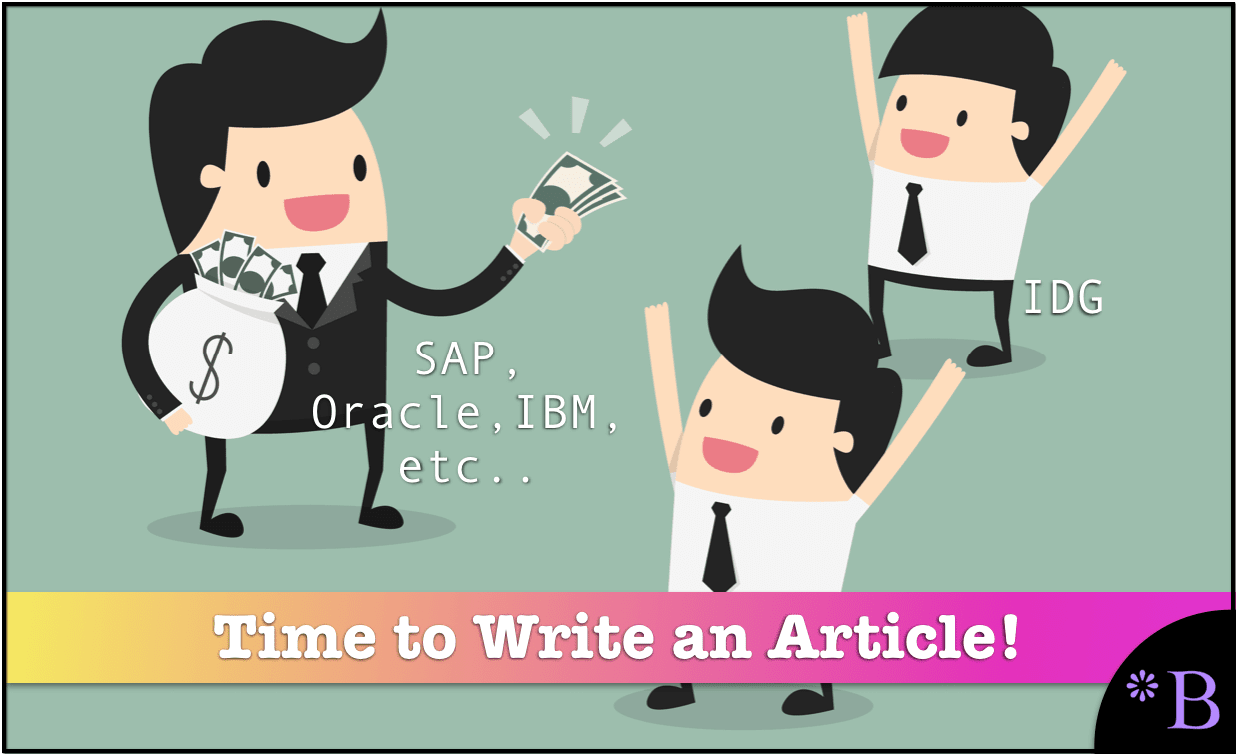
Introduction
ComputerWorld published the article What Does SAP’s Next Generation ERP Mean for Customers? On July 28, 2017.
This article, my ComputerWorld, is a series of falsehoods that are controlled by SAP. This article will review how ComputerWorld’s parent company seems to work in providing information to the IT space.
Who Writes ComputerWorld’s SAP Articles
It is most accurate to say that the article is written by SAP and dictated to ComputerWorld. Let me give an example.
If SAP were to provide me with information, and I was to publish it without checking anything and adding something like…
Then SAP said…
SAP also thinks….
With me wrapping up a conclusion based upon the quotations and questioning nothing….then who wrote the article?
I would say SAP wrote it.
McDermott and Hasso Plattner are highly compensated to push out information that allows SAP to make the most possible money. McDermott and Plattner are highly unreliable sources. Therefore everything they say must be checked from every angle.
Analyzing ComputerWorld’s SAP Articles
These articles influence people and provide them with false information, as the readers do not realize that IDG/ComputerWorld rents out their publication to SAP.
This article was not declared as promoted content. Only the middle portion, which are ads that are proclaimed as promoted content.
If you look at the software produced by BuySellAds, the placement of an advertisement in the middle of the page is called a “Promoted Content” slider. But that is a standard term for a middle-page ad. ComputerWorld UK uses the RevContent ad serving software. That text most likely came across in the software as the added description.
But you are speaking not per the software’s definition of promoted content, but regarding the media definition, which means ComputerWorldUK was paid to publish it.
What I have found is that trade publications like this don’t have any requirements for accuracy. They exist to promote and to profit maximize.
And this gets into who owns ComputerWorld UK. ComputerWorld UK is owned by a media conglomerate named IDG.
Who and What is IDG/IDC?
IDG is a conglomerate that focuses on tech media. Their website declares that they are the number one tech media company in the world. That part may or may not be accurate, but there is no doubt that many people get information about information technology from IDG, or more specifically, its publications.
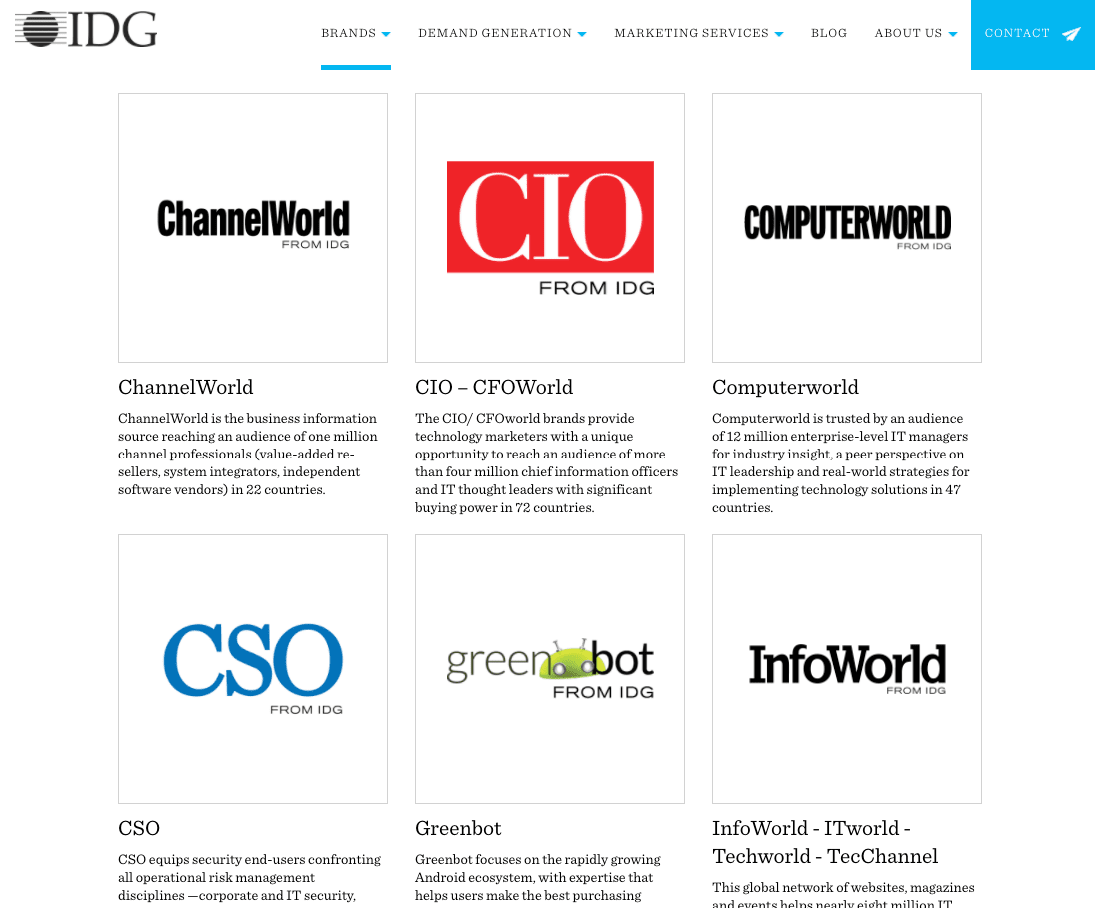
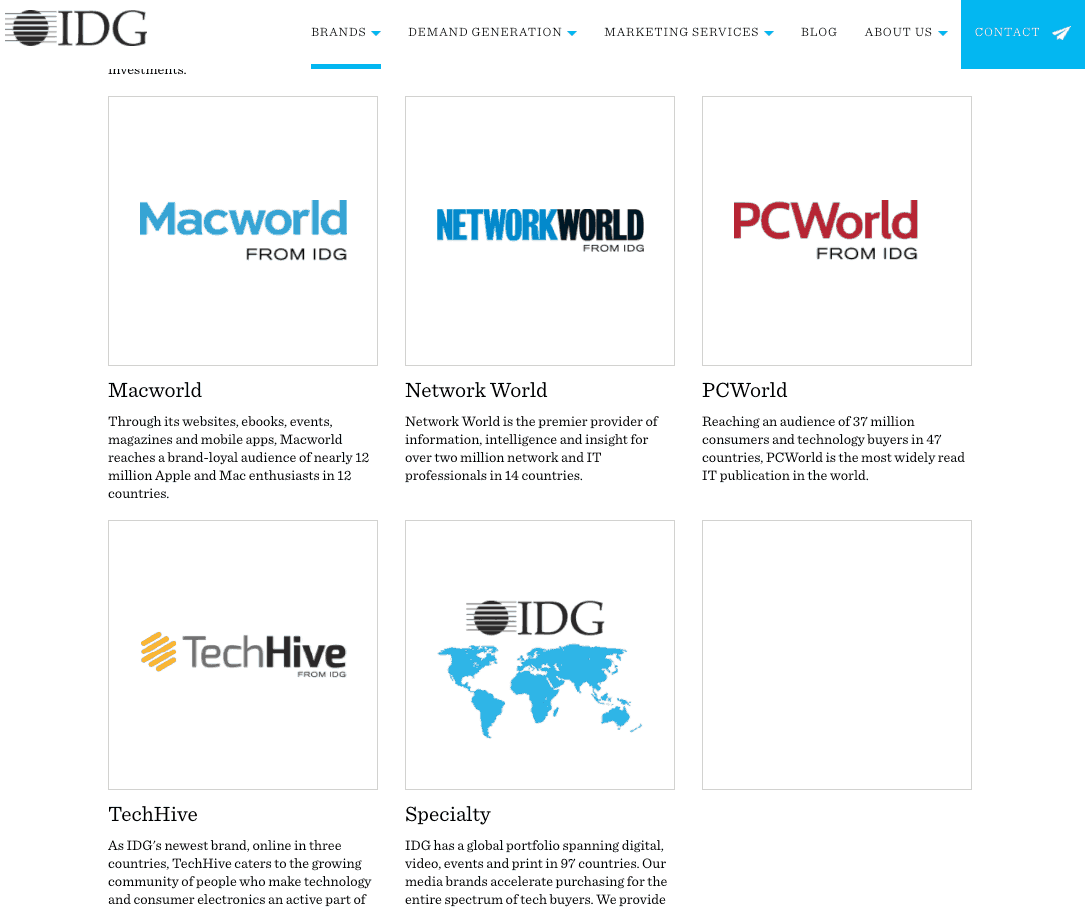
There is sometimes confusion as to whether IDG and IDC are the same company. The relationship is covered in the following quotation from Wikipedia.
“International Data Group, Inc. (IDG) is a Chinese-owned, American-based media, data and marketing services and venture capital organization. IDG evolved from International Data Corporation (IDC) which was founded in 1964 in Newtonville, Massachusetts, by Patrick Joseph McGovern. IDC provides market research and advisory services and is now a subsidiary of IDG.”
Therefore, IDC is just another of IDG’s offerings. IDC performs research. Although, after reviewing IDC comments, we question this. One of IDG’s low-quality quotations is covered in the article How to Understand Why Fiori Won’t Be Able to Survive.
Also, I have a problem with obtaining information of any kind from an entity that a Chinese company owns. China has no freedom of the press, and journalists are quite limited in what they can write. According to Reporters Without Borders, China ranks 176th out of 180 countries globally in press freedom. RWB calls China the “world’s leading prison for citizen journalists.”
How IDG Works
I wrote a book that described how Gartner receives undeclared funding from vendors and how it impacts their media output. This is covered in the book Gartner. IDG was always in the background for me, and I never investigated them. Now it seems they own a publication like ComputerWorldUK that is merely marketing for IT entities.
So with ComputerWorldUK, the article itself is a paid placement in many cases, but then there are advertisements on the page.
I counted eight advertisements on several of the article pages, which means that IDC is getting paid to have people write this article. That may not be a problem, but the article is inaccurate. So money is pushing out bad articles.
The method is obvious. Put no effort into writing the article. Repeat whatever a source tells you verbatim. Pick up money from both the vendor and then the ads.
The best way to put out the most articles with the fewest writers is to report whatever the vendor or other paying entity wants you to say.
IDG’s Overwhelming Focus on Advertising
It is interesting to observe this quotation from their website. Here is where they appeal to advertisers.
Who We Are
“We monitor behavior at an account-based level to identify in-market purchase intent and buying teams researching technology products and services across the globe.”
So the readers are being surveilled for purchasing cues? Is that communicated to readers when the site visit?
“Our customers know they can rely on IDG to deliver the right buyers at scale exactly when they are most receptive to a marketer’s message, wherever they may be in the world.”
Are readers “readers,” or are they buyers? IDG seems to call their readers buyers. So their view of a person reading their content is that they are buyers?
Well, let us ask this question. If readers are viewed as buyers, then what is the incentive to provide accurate information. The question is pertinent because accurate information is not always promotional.
Pretending to do Research?
One of the curiosities in the IDG stable is IDC. IDC presents itself as a research entity. But how can it be a research entity if:
But how can it be a research entity if:
- It is owned by a Chinese company, a country at the bottom of the barrel in terms of press freedom?
- If IDG distributes highly suspect information through media entities like ComputerWorldUK and CIO, how dedicated are they to publishing truthful information?

IT media essentially relies on the fact that people are generally not aware of how the system works. The more one analyzes IT media’s system, the more it becomes apparent that the entities are tricking their readers. It takes a while to figure out what is going on, but articles from most IT media entities follow predictable patterns once you do. Obviously, the IT media entities do not care about what is true or contesting any of the IT’s ideas and information presented by the largest entities.
Why Our Esteem for IT Media Keeps Dropping
It’s very much about copy and paste and gets paid.
- Get a quote
- …include that quote
- …and move on.
The idea that if you gather different quotes, then you are doing journalism is ridiculous. In the SAP space, the quotes in these articles are almost exclusively from entities with a financial bias. Either they are from SAP itself, an SAP consulting firm, ASUG, a user group controlled by SAP, Gartner, which receives massive amounts of money from SAP. None of these biases is explained to the reader, so the sources are presented as individuals and entities with information to provide. Very few alternative viewpoints are offered.
If an entity is highly inaccurate about previous statements, why would anyone listen to them about the future’s current statements? If a media entity repeats statements from entities that pay it without validating the source, what is the purpose of that media entity to deceive the reader?
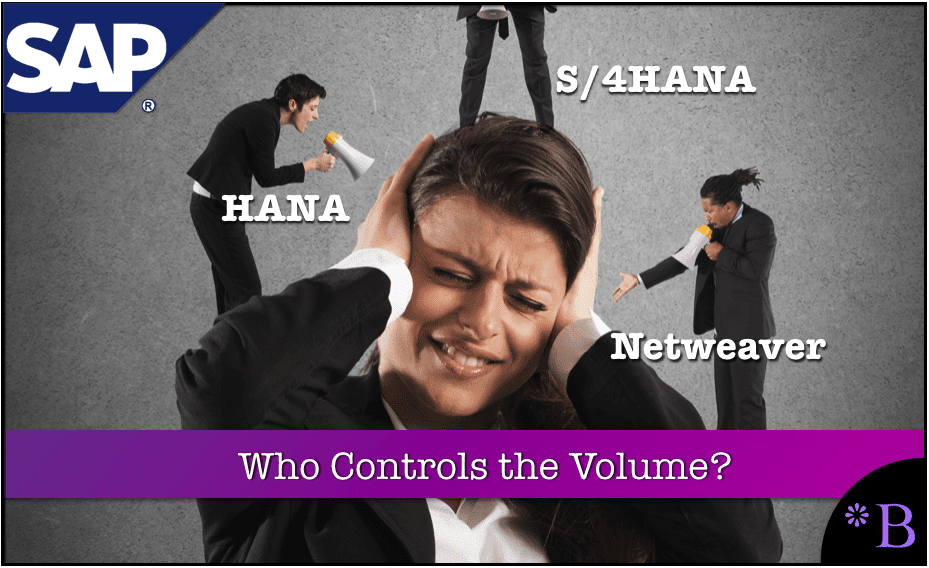
It almost appears that SAP controls the volume nob of IT media. When SAP has something new to sell and inaccurate claims to make, IT media entities must write long, high-octane articles that SAP wants. But when something is discontinued, IT media reliably turns down the volume, writing the shortest article possible. This was covered in our article How SAP Has Quietly Changed Strategy on HANA and Oracle. This was a change in policy regarding Oracle and extending their relationship. SAP did not want this change in a policy known. The article we found on this was again……curiously short at 144 words.
Introducing The IT Media Automation Article Algorithm (ITMAAA)!
We have been investigating machine learning for forecasting. ML has a lot of marketing puffery attached to it. And you don’t need to run an ML algorithm to automate tasks. The problem of forecasting is much more complicated than IT media article writing.
Let’s look at the algorithm for publishing on an IT subject.
- Step 1: Find an IT term with a high number of searches.
- Step 2: Maintain a table of vendor contacts.
- Step 3: Maintain a table of vendors that say they do different “keywords.”
- Step 4: Maintain a table of desirable outcomes that could be attributed to anything such as “digital transformation,” “improvement initiative,” “Six Sigma program,” etc…
- Step 5: Send out automated emails to vendors listed in the DB as doing that thing.
- Step 6: Request several quotations from the vendor. Further quotes are provided by references to either end customers or consulting companies that the software vendor provides in the file response.
- Step 7: Send an automatic request for money to be included in the article.
- Step 8: Include quotations from vendors that meet the minimum threshold (say $7000).
- Step 9: (IMPORTANT!) Provide no analysis or fact-checking of the quotation.
With the input material available, we now move to apply the writing algorithm, which inserts quotations into a keyword sequence.
- Introduction topic is essential because <Keyword> is enabling companies to <Desirable Outcome>.
- Quotation #1
- Glue Paragraphs:(These can be written by inserting sections talking about how “keyword” is interesting and leads to “insert generic keyword like — “digital transformation,” “improvement initiative,” “accelerated business value,” etc.. List of glue paragraph keywords kept in a database that is used by all articles.)
- Quotation #2
- Glue Paragraph
- Quotation #3
- Glue Paragraph
- Quotation #4
- Conclusion
That is the algorithm. Now here is the machine learning part.
Each article is tracked for how much income it brings in. As time passes, the “machines learn” which articles can pull the most money out of software vendors and software consulting companies. For instance, articles eventually will look something like his.
- “SAP HANA Cures Cancer”
- “Larry Ellison Voted the Best Looking Man in the Universe”
- “Deloitte and Accenture Delivery Unlimited Value, Resulting in a 6 Month Backlog in Beginning New Projects”
Why Even Have Human Involvement Performing Writing Side of IT Media Entities?
Writers take up time and resources that could be better spent in the employment of the primary purpose of the media entity, which is to obtain funding from industry sources. There are many articles which are written by the industry source itself. Not having to produce any content (at least with a human) is the ultimate objective of IT media entities. That is, we have IT media entities that would prefer to do no work at all. They merely desire to rent out access to their audience to a funding source. These paid placements in most articles are not identified as paid placements. They can be identified by several techniques, including how well the text matches the marketing material from the software entity and the links that exist on the page.
But the funders can’t be expected to write all of the content for the media entity unless the entity is like DigitalistMag, which is owned by SAP. This is where SAP directs people for truly informative coverage of SAP. Other sources include ASUG, SAP Press, SAP Insider — which, while technically not owned by SAP, provide such identical coverage to SAP that they have clearly been captured by SAP.
Having to write articles is where the ITMAAA comes in.
Creating ML algorithms to produce a better forecast is complicated, but automating media is far more comfortable. The beauty is that IT media has already moved in that direction by making its writers produce puff pieces, shrinking deadlines, reducing pay, having writers who don’t know the subject areas they are covering.
Complete machine article development is just the next step.
And the thing is that this algorithm and minimally written articles come from entities that dominate the IT media sphere. The Register gets 11.4 million page views per month! The less they ruffle feathers at their funders, and the more they serve disposable and easily digestible articles, the more money they make like IDG. They claim to be #1 in IT media. And they use this claim to sell ads and paid placements to IT companies.
Keeping the Accuracy Deliberately Low
We review many articles from IT media for accuracy. IT media entities like to keep their accuracy below 5 out of 10. Any higher takes doing research and runs the risk of offending the funders.
The Importance of Profit Maximization in Media
If we look at the top media entities, like IDG or Forbes, or TechTarget, they are all run to maximize profits. They have no concern about publishing accurate information or even actually being journalists. At one time, I thought that IDC/IDG was a legitimate entity. But they aren’t. They are media entity that publishes anything for money. They own 8 of the top 20 most visited IT media websites, including CIO Magazine and ComputerWorld.
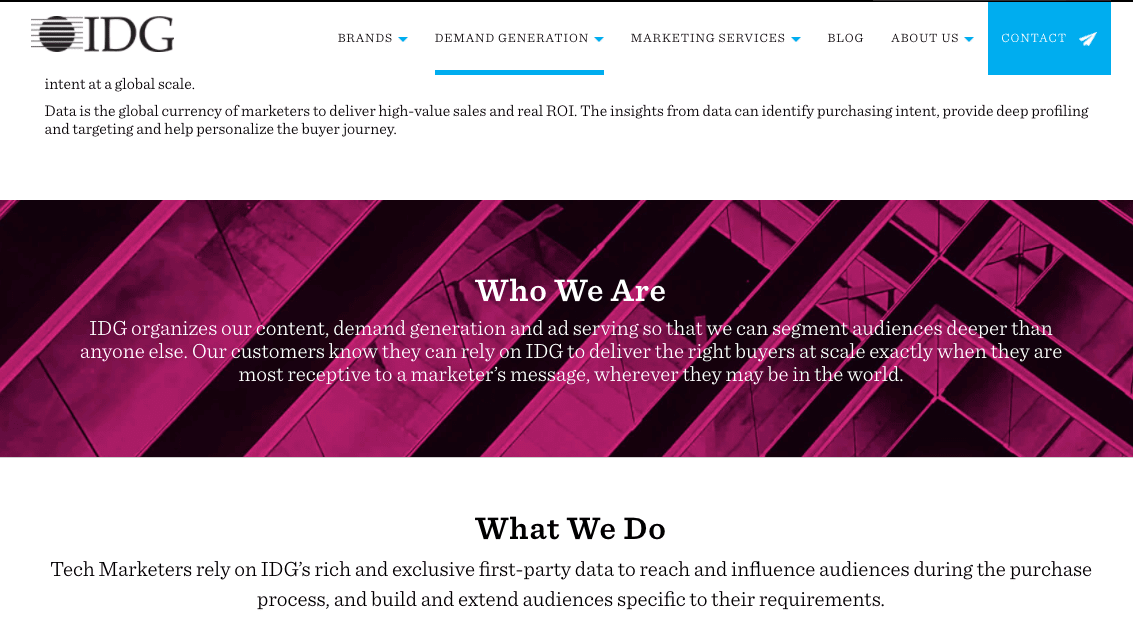
IDG’s website is quite clear that they provide passive buyers ready to make a purchase. What types of articles does one think they might end up publishing with? This is a primary objective?
Quality Publishing from…China?
A Chinese conglomerate owns IDG. A Chinese conglomerate owns Forbes. China is a country that is firmly opposed to freedom of speech in all of its forms. If you were to be so “out of it” to publish anything against the government in China, you would find yourself in prison exceptionally quickly. You may or may not exist in that prison. And if you do, you may not look or feel very much like the same person as when you went in.
This is who western readers should be getting their information from? From a conglomerate based in a country that has both never discovered and does not respect either the freedom of speech or the ability to question authority? The US policy managers and regulatory bodies like the Federal Communications Commission and Federal Trade Commission agree with this arrangement? Apparently, they do, as they have not made a peep on the subject.
And there will likely be more Chinese purchases of media entities in the future.
Media Concentration in IT Coverage
IDG publishes nearly half of the best-known media brands/websites in IT. However, this is not actually multiple different publications. Still, a single firm that owns what used to be multiple independent brands was consolidated years ago, and their staffing slashed. It is a firm that shares authors and a marketing team for one company with a single voice. They can also produce a “cancophy effect” or “echo chamber” by releasing similar coverage through multiple websites — making it appear as if multiple independent sources have come to the same conclusion on a topic.
TechTarget is the other major IT media provider, which has multiple IT brands/websites under its control. This means that the US IT media space is controlled by two disreputable media conglomerates that hide their industry affiliations and are little more than extensions of the marketing departments of the companies they write articles about. It is no wonder that, for instance, when these firms cover the topic like H1-B visas, they leave out the domestic workers, and focus only on the issues of foreign workers and what corporations need. These media companies do not derive income from domestic workers, so there is little point in covering the story in a way that spends even 1% of their time looking at the interests of anyone not driving revenue to them.
Employment Opportunities at IDG and TechTarget
If you want to sell ads and paid placements to IT companies, IDG and TechTarget need you. If you want to be a journalist and cover IT, while these are the two major employers in the space, the companies want cheap writers and want to tell you what to write. Every article must be promotional of a “customer,” which is, of course, the companies paying for the article and that is being covered. With TechTarget, the approach is also to gather contact information from the reader to be shared with “partners,” which are IT companies that pay TechTarget.
Life as a Journalist at Either IDG or TechTarget
You will take quotes from the company, place them in the article, and never question whether they are true. And if you don’t like this arrangement, there are very few other places to work in IT media. The people that write articles for these companies call themselves journalists. However, their correct title would be a marketer or PR agent.
Conclusion
IDG is yet another media conglomerate focused on profit maximization and receives virtually all of its income from the industry. And when you do that, the quality of information is little differentiated from that provided by IT firms’ marketing departments. This article should explain why we ignore what IDG publishes, except to understand what is being written about technology and what readers often consume.
References
https://www.computerworlduk.com/applications/s4-hana-what-does-saps-next-generation-erp-mean-for-customers-3596790
https://www.saug.com.au/news/saps-global-reseller-and-support-relationship-with-oracle-extended